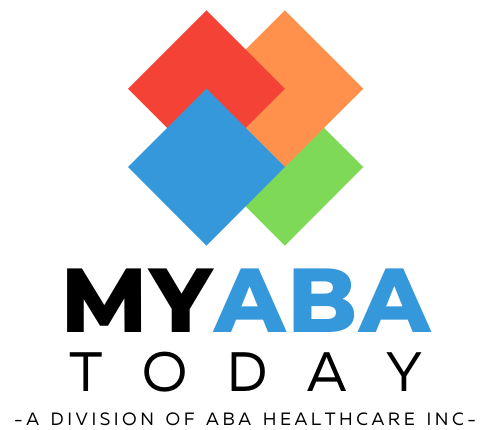Dr. Stephen Shore once said, “If you’ve met one person with autism, you’ve met one person with autism.”
As many of you know, the Centre for Disease Control and Prevention reports that there are now 1 in 68 children living with autism in the United States. What this means for each child and his/her family is unique to him/her.
Luckily, however, there is a treatment that has been shown time and time again to improve the quality of life for children with autism and his/her family. The treatment I am referring to is one that is based on Applied Behavior Analysis (ABA). A well-designed treatment that is based on ABA would assess a child with autism to find out his/her unique strengths and areas of need. A program would build upon those strengths and teach the skills that he/she may need to learn. The ultimate goal is to improve quality of life with an emphasis on socially significant skills.
Things like social skills, life skills, communication skills, and other skills that would make it easier for him/her to navigate the real world. All of this programming is designed using cutting edge research, includes tracking systems to monitor how the student is doing and is implemented by well-trained therapists. Because it is the gold standard in treatment for children with autism, ABA is in high demand and it may be difficult to make a decision as to which provider you should ultimately choose for your very precious child. The purpose of this article is to help parents in the process of selecting an appropriate ABA provider for his/her child.
Tip #1 Find out who is overseeing the treatment
Make sure that the person making the clinical decisions about your child’s program has the appropriate experience and credentials to do so. This means that they should have at least a master’s degree in psychology or ABA and that they are a Board Certified Behavior Analyst (BCBA). If they do not have the BCBA designation then they should meet the requirements of the Behavior Analyst Certification Board (BACB). You can find out more about those requirements here. You would want to ensure that they have enough supervised experience in the implementation of a treatment that is based on ABA. You could ask them questions like the following:
- For how many years have you been practicing ABA with children with autism? Approximately how many children have you worked with?
- How many years of supervised experience providing ABA do you have and by whom? Was this supervisor a BCBA?
- How long have you been a BCBA?
- Do you adhere to the guidelines set out by the BACB on the responsible conduct of a BCBA?
Tip #2 Ensure they are using an individualized approach
Your child is unique and his/her ABA treatment program needs to reflect that. This means that he/she is assessed at the beginning and on an ongoing basis while receiving treatment. This is typically done once every six months to one year. This type of assessment is usually called a curriculum assessment and there are a variety of tools that may be used. I have used theVerbal Behavior Milestones and Assessment Placement Program (VBMAPP) and theAssessment of Basic Language and Learning Skills (ABLLS-R). These assessments will help the therapist identify areas of strength and need that is unique to your child. They will also allow you to see the progress your child has made as time goes on. The student is always right, and that means that if your child is not learning what they are trying to teach they need to adjust how they are teaching. For example, this might mean moving away from a traditional discrete trial training method to a more naturalistic teaching method. It is essential that your child’s unique profile informs which skills are selected to teach AND that it informs how each skill is taught. Some questions you might want to ask include:
- How do you select goals and skills that you will be teaching?
- How often will you assess my child’s program?
- What type of tracking systems do you use to measure progress?
- What do you do if my child is not learning what you are attempting to teach?
- What methods do you use to teach skills (e.g., Discrete trial vs. Naturalistic approaches)?
Tip #3 Find out how challenging behavior is addressed
It is possible that your child already does or that they may engage in challenging behavior during an ABA treatment session or any other time. It is important to remember that it is happening because it is helping them fulfill a need. It is critical to get to the bottom of why it is happening and a well-designed treatment program that is based on ABA will be able to help you and your child in this endeavor. I wrote about considerations for dealing with challenging behavior in Issue 45 of Autism Parenting Magazine.
Bottom line, when you are considering a provider for ABA treatment you want to make sure that they are assessing for the reason the challenging behavior is occurring. This is sometimes referred to as the “function” of the challenging behavior. You would want to make sure that they are using the information collected in that assessment to design an effective intervention. You would also want to make sure that they are taking steps to ensure that your child remains safe and unharmed (e.g., environmental supports), that they are working towards teaching your child a better way to meet his/her needs, and that they are tracking how the intervention is working and reporting those data to you regularly. Once again there are resources on the BACB website around what to expect in a high-quality ABA program as it relates to dealing effectively with challenging behavior. Questions you may want to ask a potential provider include:
- How do you address challenging behavior? Do you conduct functional behavior assessments and if so what does that entail?
- What procedures are used to ensure that all staff are trained to implement the procedures?
- How will you keep me informed about my child’s progress?
Tip #4 Ensure that everyone involved is well trained and informed
Regular meetings to discuss your child’s progress is a standard that must be upheld. These meetings should include progress updates that include a review of the tracking systems that were put in place. How is your child learning and what has he/she learned since the last update. In order to make sure that the treatment is being implemented consistently by everyone involved it is critical that any provider has a system for training new staff if there are multiple staff working with your child. Part of this would include proper instructions on how to implement the specific procedures that were selected for your child, opportunities to observe someone implementing the procedures, and then opportunities to practice with feedback. This might mean that on some occasions there is more than one person working with your child. Aside from the initial training sessions, there should also be a system in place for ensuring ongoing fidelity and supervision. Finally, the research is pretty clear that the children who end up making the most gains with this treatment also had very involved parents. This means that there should also be a plan for the parent to receive some training on what is being implemented with his/her child. Here are some questions you could ask:
- How do you train your staff to work with my child?
- Are there opportunities for staff to receive ongoing feedback?
- How do you involve the parents?
These are just some of the tips that I recommend when attempting to select a high-quality ABA provider. You would also want to ensure that you are comfortable working with whomever you choose, and this means that they are professional and have good interpersonal skills. It is critical that you are able to communicate your questions and concerns to whomever you are working with because the student is always right and you the parent ultimately know your child better than anybody.









